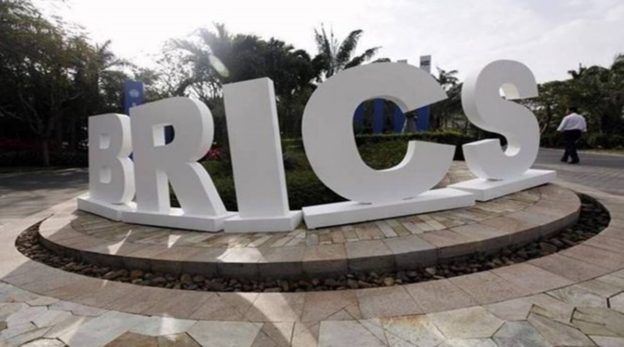With a double-digit compounded growth in dollar terms since 2008 GFC, India stands out among the five, having returned 11.6% compared to South Africa’s 8.3% gains.
At the start of the Millennium, four economies became the toast of the investing world. Made famous in its noted report on emerging economies, Goldman Sachs predicted that these four economies would drive global growth and overtake the biggest Western economies by 2039. These four economies – Brazil, Russia, India and China – came to be seen as an economic bloc called the BRICS. With a combined market capitalisation of $16.46 trillion, the four along with South Africa now forms almost 15% of the worlds’ market capitalisation of $112.43 trillion. For the first decade, these economies did grow faster than the developed economies and were the toast of the investing world, till the global financial crisis struck. Equations since the GFC have changed and the only economy to remain standing is India.
With a double-digit compounded growth in dollar terms since 2008 GFC, India stands out among the five, having returned 11.6% compared to South Africa’s 8.3% gains. While China and Brazil yielded returns of 5.4% and 4.1%, respectively, Russia fared poorly as the ongoing geopolitical tensions battered both its currency and stocks alike. The Russian ruble has lost more than a quarter of its value so far in 2022. From being the Goldilocks economies, they formed a new club called the Fragile Five as their currencies were beaten down in 2013 and external situation came under pressure. Even though India joined the others in becoming a part of the Fragile Five, following the taper tantrum in 2013, it has since emerged stronger than ever before. Explains Deepak Jasani, Head of Retail Research at HDFC Securities, “Compared to the other BRICS, India has outperformed in terms of MSCI $ returns since 2008 because of its strong growth, demographic profile, political stability, investment friendly policies and strong Foreign Direct Investments/Foreign Portfolio Investment flows.”
Among other factors, market experts say that unequal growth rates and low trade integration impacted the economic bloc’s collective success. These economies missed the opportunity to form a strategic cooperation agreement. A strong domestic market and attempts to fortify India’s external account has helped it deliver better growth and market returns than other economies that were heavily dependent on commodity exports. Explains Jasani, “Corruption scandals have set Brazil back and sanctions have been detrimental to Moscow. Both Russia and Brazil have also suffered from high inflation and interest rates in many years.”
A strong domestic market and relatively stable external account will help India continue to command a premium over other emerging markets. Says Amar Ambani, Senior President and Head – Institutional Equities, Yes Securities, “Indian markets will trade at a premium to EMs given the prospects of strong consumption, underpinned by aspirational middle class, rapid digitalisation, growing formalisation of the economy, government’s thrust on augmenting capital expenditure and overall optimistic outlook on corporate earnings.” Ambani says that Brazil, Russia and South Africa have primarily lagged in terms of economic growth and market performance given the subdued commodity price outlook during the last decade. India has benefited from lower commodity prices as it is a net importer of commodities, he says. Over the six years, India has benefited from formalisation of the economy and economic reforms, which has not been the case in Russia, Brazil and South Africa. High interest rates, lower growth and corruption scandals have rocked some of these economies. Barring the Covid crisis, a phased fiscal consolidation has also worked as a positive for India. According to Jasani, “Despite its high GDP growth, China has suffered due to regulatory crackdowns, control of pollution by cracking down on polluting industries, harsh Covid control measures, real estate bust etc.”
Going forward, strategists say India can sustain higher growth rates for a prolonged period of time, even though near-term headwinds will impact growth. According to Bloomberg consensus estimates, India’s GDP is poised to grow at 9.1% in 2022 after last year’s 6.6% contraction. That will affirm a growth rate of 4.7% for the BRICS nations. Barring the pandemic year, the five nations together have grown at over 5% every year since 2015. Altogether the growth of these five BRICS economies will grow less than 5% this year because of Russia, China and South Africa. According to experts, India will find it difficult to grow at a fast rate in the immediate future due to a lot of headwinds — some domestic and some global — although given the political leadership and demographic profile it has potential to grow at high rates for a number of years, , says Jasani. And if the Ukraine crisis resolves, Russia could benefit from rising commodity prices.
Commenting on China, Ambani says: China’s economic growth rate has slowed dramatically during the last decade, though it is not fair to compare India and China given the sheer size of the Chinese economy. So, even though Chinese economic growth has slowed to 6% from 10-11% during 2000-10, Chinese GDP of $15 trillion still adds$900 billion to the economy, when compared with India’s GDP adding around $210 billion to the economy every year.”
https://www.financialexpress.com/economy/india-stands-tall-amongst-brics-with-highest-cagr-returns-since-2008/2468406/





